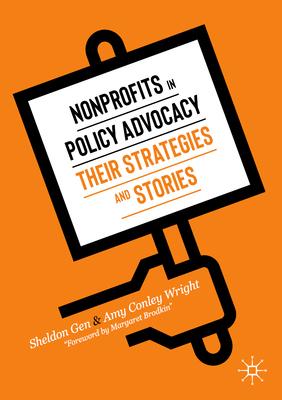Policy advocacy is an increasingly important function of many nonprofit organizations, as they seek broad social changes in their concerning issues. Their advocacy practices, however, have often been guided by their own past experiences, anecdotes from peer networks, and consultant advice. Most of their practices have largely escaped empirical and theoretical grounding that could better root their work in established theories of policy change. The first book of its kind, Nonprofits in Policy Advocacy bridges this gap by connecting real practices of on-the-ground policy advocates with the burgeoning academic literature in policy studies. In the process, it empirically identifies six distinct policy advocacy strategies, and their accompanying tactics, used by nonprofits. Case studies tell the stories of how advocates apply these strategies in a wide variety of issues including civil rights, criminal justice, education, energy, environment, public health, public infrastructure, and youth. This book will appeal to both practitioners and academicians, as each gains insights into the other's views of policy change and the actions that produce it.

Nonprofits in Policy Advocacy: Their Strategies and Stories
Policy advocacy is an increasingly important function of many nonprofit organizations, as they seek broad social changes in their concerning issues. Their advocacy practices, however, have often been guided by their own past experiences, anecdotes from peer networks, and consultant advice. Most of their practices have largely escaped empirical and theoretical grounding that could better root their work in established theories of policy change. The first book of its kind, Nonprofits in Policy Advocacy bridges this gap by connecting real practices of on-the-ground policy advocates with the burgeoning academic literature in policy studies. In the process, it empirically identifies six distinct policy advocacy strategies, and their accompanying tactics, used by nonprofits. Case studies tell the stories of how advocates apply these strategies in a wide variety of issues including civil rights, criminal justice, education, energy, environment, public health, public infrastructure, and youth. This book will appeal to both practitioners and academicians, as each gains insights into the other's views of policy change and the actions that produce it.